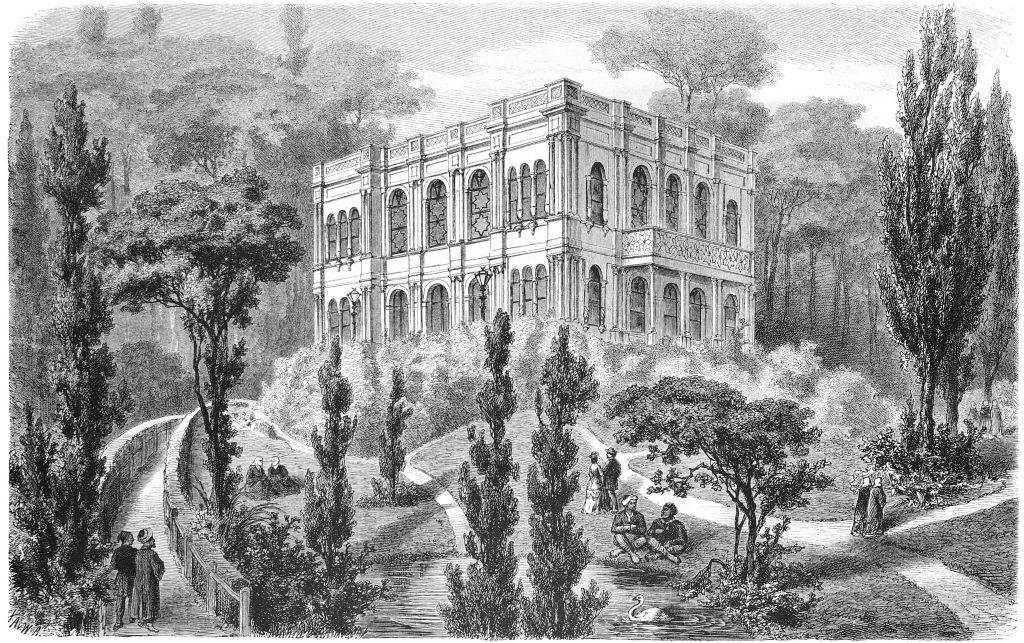Meeting the Sultan
Alan’s TTIM Stories #80
After months of travel from Washington DC to Constantinople, a new Minister to Turkey arrived to represent the United States to the Ottoman Empire in December of 1880.
Sultan Abdulhamid II gave a reception and dinner in the opulent style of an empire with a warm greeting for the new minister. The meeting occurred at the Yildiz Palace (drawing below). The compound included an opera house, theater, palace gardens, library, and armory. Accoutrements included mother-of-pearl hallways, painted landscapes on the ceilings, and an abundance of large mirrors. Some of the furnishings were built by Abdulhamid – a gifted woodworker.
Through the pomp and ceremony, the American delegation noticed the unease of the Sultan. He spent most of his time behind the walls of the inland summer residence at Yildiz (Star Palace) on a hillside removed from potential attacks from the Bosporus Strait. Abdulhamid suffered from the fear of uprisings or a possible military coup. His two predecessors were deposed. Paranoia caused the suspension of the Ottoman Constitution and Parliament. Diplomacy for American interests reflected the reality of a shrinking empire and a nervous Sultan.
With a limited diplomatic budget, the new minister was unable to reciprocate with lavish parties and receptions to impress the Sultan and his officials – unlike European powers who held significant Ottoman debt. He depended on the mutual benefits from a cooperating relationship of the United States and the Empire. The new minister’s interests included agreements and treaties involving commerce, trade, and free navigation of the seas – issues in agreement with the Abdulhamid government
Diplomacy was needed for other nagging issues – permission for archaeologists to excavate ancient ruins checking the trend of artifacts finding their way to European museums, keeping neutral in the breakaway attempts of Balkin nations and Greece, and most annoying – protecting American Christian missionaries determined to push their religion throughout a Muslim country.
The tactical ability of the new minister proved to be successful on major issues with military precision during his short term. Military precision was not new. He now faced the Sultan of a world empire instead of entrenched troops across Pennsylvania farm fields. Seventeen years earlier, General James Longstreet objected to a particular strategy. Under orders from General Robert E. Lee, he sent Pickett’s brigade toward the disastrous charge at Cemetery Ridge south of Gettysburg.
Sources:
Longstreet: The Confederate General Who Defied the South by Elizabeth Varon
Wikipedia
Wikimedia Commons

Leave a Reply